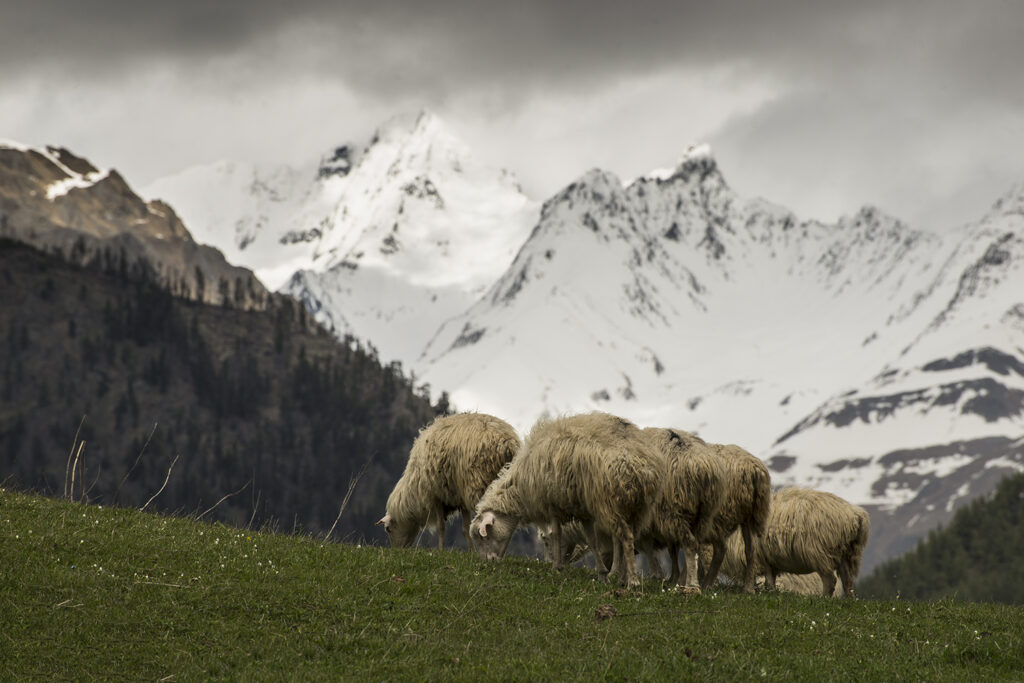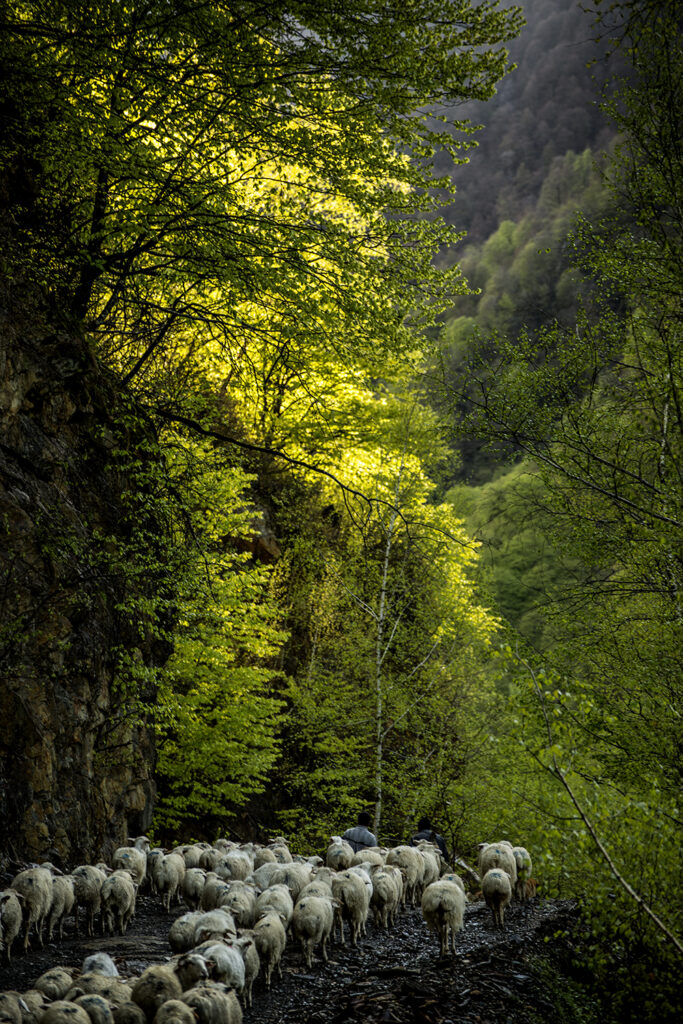The Mystery of Solitude – The Transhumance
In the depths of centuries, within the high mountains of Tusheti, the unique tradition of herding sheep has been molded, defining the extraordinary lifestyle of the Tush people and intertwining three regions: Tusheti, Alvani, and the Shiraki-Samukhi Plain. These three points, spanning approximately 200-300 kilometers apart, form a unique geographic triangle. Within this triangle, the journey of shepherds and the flock follows an annual cycle of roughly 4-4-4 months: four months in Tusheti, four on the migration routes passing through Kakheti villages, and four on the winter pastures of Shiraki-Samukhi. This nomadic way of life earned Tush people the name of ‘Three Lands’ Tribe’. The circular herding journey begins in late spring on the flowery plains of Tusheti. Meadows spread from 1,900 to 3,200 meters above sea level, are rich in soil and imbued with unique minerals. The structure and composition of Tusheti’s pastures shift with altitude and exposure, ranging from moist, lush grass to rare alpine plants that has long nourished the highly prized Tushetian sheep, renowned across the Caucasus. An exceptional summer scene: white sheep scattered across green slopes, guarded by the loyal Caucasian dog, and the shimmering silhouette of the shepherd, following behind, has become a timeless icon of Tusheti’s intangible cultural heritage and identity. When autumn’s first chill touches the mountains, the birch groves turn yellow, and the mist rises from the ravines, the shepherd begins the mystery of herding. Thus, begins Europe’s largest animal migration. For two weeks, 40-50 thousand sheep, about 8 thousand cattle, 500 horses, and just as many shepherd dogs descend from the Tushetian peaks. They cross the migratory routes through Kakhetian villages, rest, and finally settle for the winter in the Shiraki-Samukh pastures. The enduring routine of transhumance not only holds economic significance but also fosters cultural exchange and dialogue, as shepherds share traditions, experiences and knowledge with the locals they encounter along the way. Consequently, over time, the sheep herder has become a bridge between worlds, like a bee bringing abundance wherever he goes: along with his sheep, he brings cheese, meat, wool for crafting, felt, and yarn to the communities. In addition to being a social, cultural, and economic tradition, the herding is a centuries-old path of personal growth. It is a journey marked by solitude, courage, and, most importantly, a profound connection with ancestral stories, legends, and the mystery of rediscovering one’s roots.

